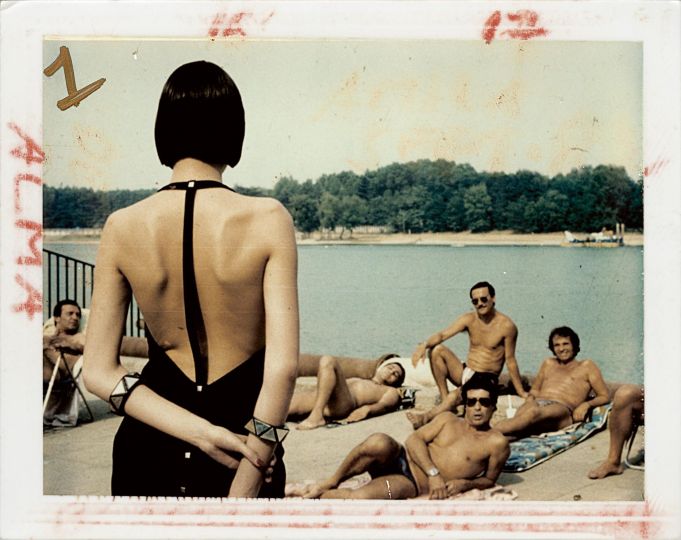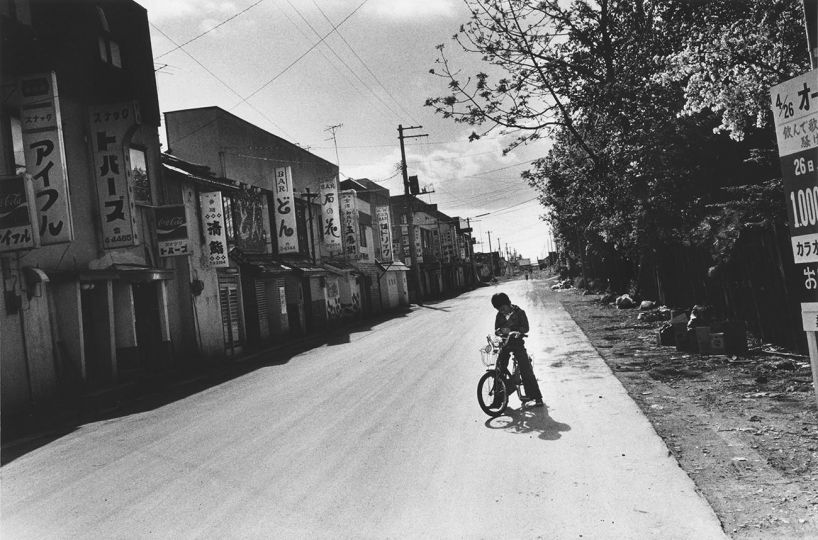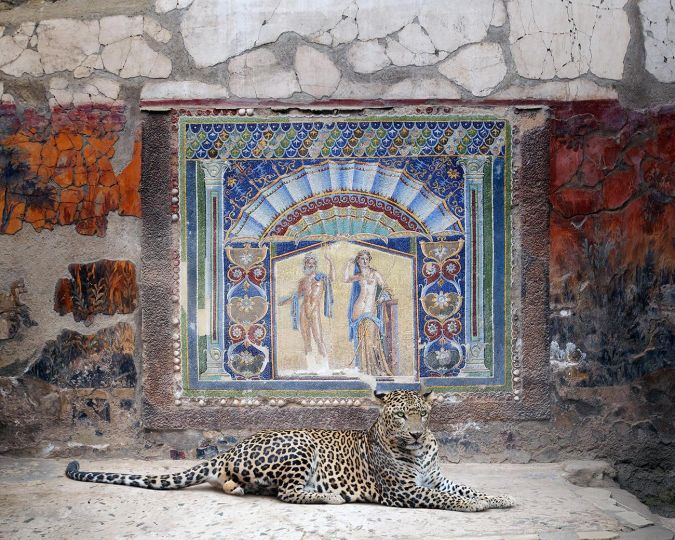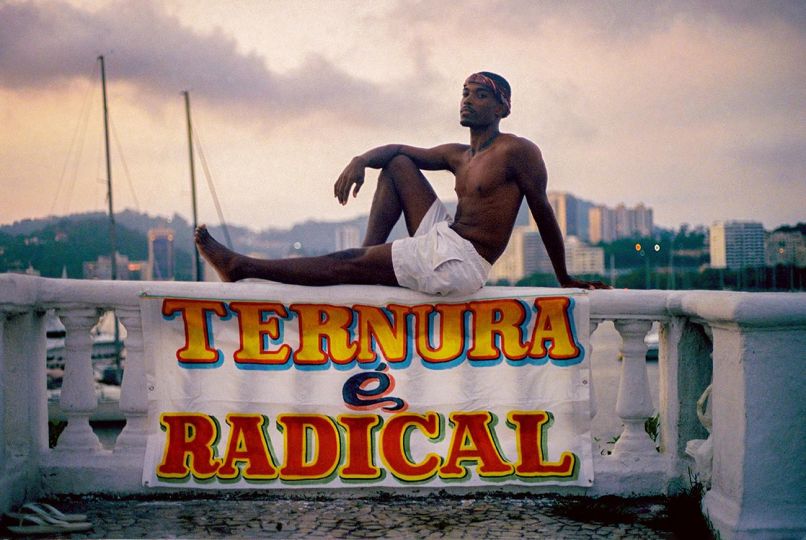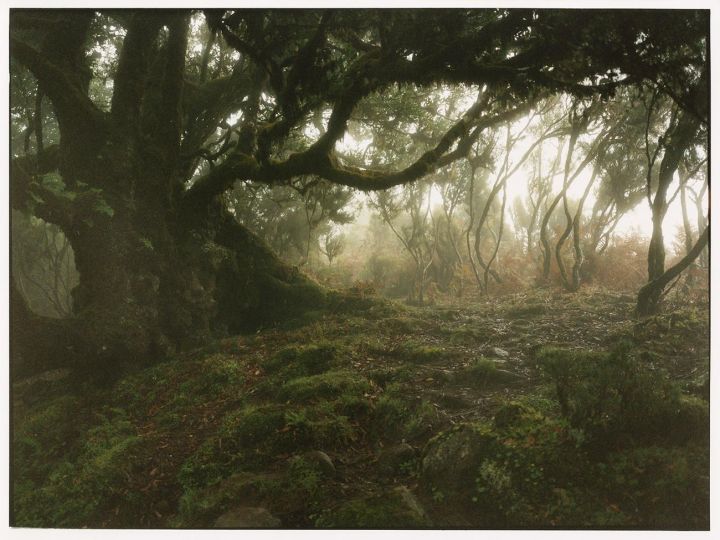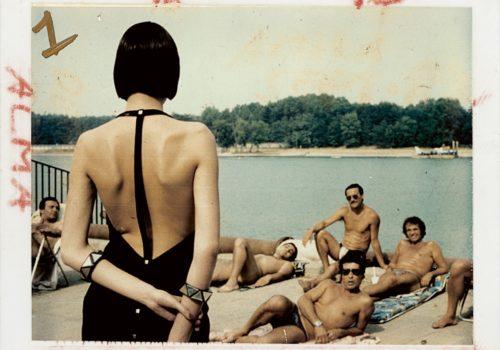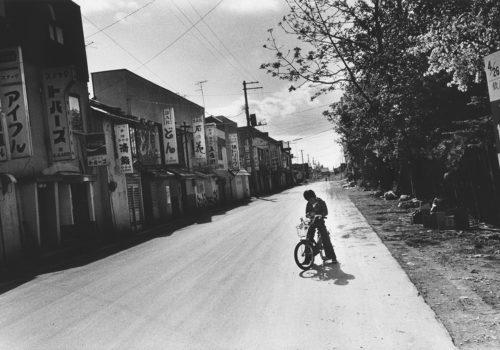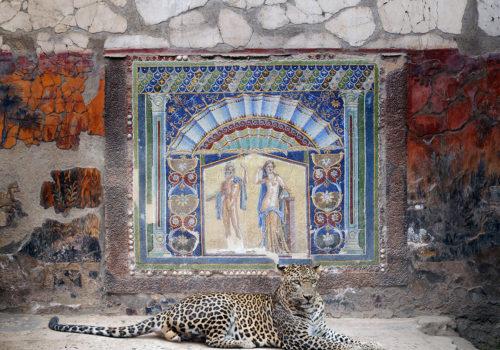I always thought that my books were the hidden face of my convictions or my rejections — that they represented the most vigorous and condensed expression of my art.
(Ed Ruscha, excerpt from the book)
Since our meeting in 2005 in Santa Fe, New Mexico […], I dreamed of paying tribute to Ed Ruscha, this artist who spent his life playing with words and images.
(Philippe Séclier, excerpt from the book)
Atelier EXB publishes the book Real Road Test by Philippe Séclier. Along Route 66 between Oklahoma City and Los Angeles, Philippe Séclier revisits, sixty years later, the photographic series of the American artist Ed Ruscha which made him famous. This project is in the vein of his previous artistic explorations where he takes a work of art to make us rediscover it. Published in Real Road Test, in an intimate format and soft cover, like Ruscha’s cult books, this work pays homage to a timeless work while reappropriating it with a slight shift, playing on words and images.
In the footsteps of Ruscha
Edward Ruscha left his mark on the history of photography by becoming a major player in the young Californian art scene in the 1950s. In 1963, he began his project of photographing in black and white gas stations, between Los Angeles and Oklahoma City, along the famous Route 66. A year later, he self-published his first artist’s book, Twentysix Gasoline Stations (1963), 400 copies were printed. In the process, he published several works which dealt with automobile culture in the United States, architecture and landscape: Some Los Angeles Apartments (1965), Every Building on the Sunset Strip (1966), Thirtyfour Parking Lots (1967), Royal Road Test (1967), Nine Swimming Pools (1968), Real Estate Opportunities (1970) and A Few Palm Trees (1971).
Sixty years later, in 2022, Philippe Séclier decided to follow in the footsteps of the American artist. He followed Route 66 to try to find these gasoline stations and photograph them, this time, in color. He applied the same protocol to all Ruscha series. Guided by the precise coordinates of each of these places, Philippe Séclier created his own compositions which paint a portrait of the American landscape. He revisited the titles of the different series as much as their concepts: the service stations are no longer 26 but 36, the nine swimming pools are only a view from nine distinct angles, it is no longer the buildings but the crossings that are listed on Sunset Strip and Ruscha’s various studios in turn became a photographic series in their own right. Thus A Few Parking Lots, Some Palm Trees, One Swimming Pool, Every Crossing on Sunset Strip, Studios Estate Opportunities and Various Los Angeles Apartments constitute this work.
At the end of the book, an illustrated bibliography, from Philippe Séclier’s personal collection, demonstrates the breadth of books by and about Ruscha through more than 60 titles. Entitled Then & Now Books, it is an echo of the major Ed Ruscha retrospective, Now Then, presented at MoMA in New York, in fall 2023, and at LACMA in Los Angeles, in spring 2024.
Q&A with Philippe Séclier
How did you discover Ed Ruscha’s work and what impact did it have on your book project?
Having had the chance to travel a lot in the United States, from the 1980s, and especially in the 2000s, I was able to discover many paintings by Ed Ruscha in most American museums, as well as his conceptual books which he self-published in the 1960s and 1970s. Having read in various interviews that he revered Robert Frank’s The Americans, I wanted to meet him in 2005, when I was preparing a documentary film on the history of this book. I filmed and interviewed him in Santa Fe then I saw him again in Paris, in 2006, on the occasion of his major retrospective at the Jeu de Paume, Ed Ruscha photographe. Since then, I have never stopped researching, buying his books, seeing his exhibitions, notably the one dedicated to him by the Hayward Gallery in London, in 2009, for his 50 years of painting, as well as the one organized by the Thomas Zander gallery in Cologne, at the beginning of 2020, which presented, among other things, 50 prints from his series Twentysix Gasoline Stations. That day, I promised myself I would follow in Ed Ruscha’s footsteps. But I preferred to wait until 2022, knowing that he had taken these photos between Los Angeles and Oklahoma City, in 1962. I did not want to limit myself to Gasoline Stations. I had in mind to acquire several other of his series, most of which have become cult books.
How did you go about finding these different places that Ed Ruscha photographed in the 1960s and 1970s? And how did you appropriate his series?
As a former journalist, I have always associated my photographic practice with the search for documents, texts or images, which always allow me to know more about the artists who fascinate me. There is a large bibliography on Ed Ruscha and, by purchasing many of his books or having read most of the interviews he gave to the press, and which are notably collected in a booklet, I I was able to cross-reference information which allowed me to find the precise addresses of the different sites he photographed. It also happens that the Museum of Modern Art in Fort Worth, Texas, published an exhibition catalog Ed Ruscha: Road Tested, in 2011, in which was inserted a very complete map, which included all the names of the avenues or streets which had been the subject of his photographic series, as well as the location of his various studios in Los Angeles. I rented a car, entered each address into my GPS and set off from Oklahoma City to Los Angeles, where I stayed for two weeks, in order to document as many of the places I revisited them in my own way, that is to say in color, but always with the idea, like him, of taking snapshots and moving on quickly.
Why did you want to divert the titles of each series from their original version?
As we can see at the end of the book, in the bibliography of Ed Ruscha’s books that I have, many photographers, whether American or European, have revisited his series, notably Twentysix Gasoline Stations and, to a lesser extent, Some Los Angeles Apartments. On the one hand, I wanted to go beyond these two books which are known best, by incorporating other series and, on the other hand, take the opportunity to play with the titles that Ed Ruscha himself chose in reversing or exchanging words, while obviously referring to their original versions. But, for that, I first had to confront in situ all these sites listed in his books which could have disappeared or been totally transformed. However, to my great surprise, many of them reappeared in front of my lens.
At the end of the book, you present a selection of works by and about Ed Ruscha that you have in your library. What place, generally speaking, do books have in your photographic work?
A very important place, necessarily. I never really thought about putting together a collection of photo books or books on art in general, but by dint of documenting myself and being interested in certain photographers and other artists, I ended up building up over the years, decades a fairly coherent set of publications, reference works as well as self-published books by illustrious unknowns which have as much value, in my eyes, as those that bibliophiles seek at all costs. It is these bodies of work that have, at one time or another, made me want to confront works, whether they are reproducible or not. I owe this chance in large part to Xavier Barral, who left us five years ago already, and who gave me the opportunity to express myself, by pushing me to “build” works for books that allow me to echo editions already listed.
This is not the first time that you have returned in the footsteps of artists who have left their mark on you. What do you think connects Pier Paolo Pasolini, Robert Frank, Tadao Ando and Ed Ruscha?
We could also add Sergio Larrain, to whom I dedicated an opus published in Chile, in 2014. By retracing their footsteps, there is first of all the desire to retrace, in the literal sense of the term, not only a work or part of a work, but also a life journey. It’s not only about travel – that’s always what attracts me in the first place – but also a certain form of commitment, I was even going to say radical, which is their common trademark. First and foremost, these are singular works that emerge and which, therefore, move me. Aside from Pier Paolo Pasolini, whom I did not know – he died, assassinated in 1975 – I had the chance to approach the four other artists mentioned, sometimes in rather special circumstances, to exchange with them and question them about their freedom to create. I would add that for each of them, writings hold a preponderant place in their art. They express themselves not only through images, whatever they may be, but through language too. And that’s what really motivates me.
Philippe Séclier
Photographer, director and exhibition curator, Philippe Séclier has notably published Hôtel Puerto, a long-term work on ports around the world (Images en maneuver, 2001), The long sand road, in the footsteps of the writer and filmmaker Pier Paolo Pasolini (Éditions Xavier Barral, 2005), El camino de Tulahuèn, on those of the Chilean photographer Sergio Larrain (Lom Ediciones, 2014) and Atlas Tadao Ando, on more than 120 buildings by the Japanese architect around the world (Atelier EXB, 2021), sold out in a few months.
He directed two documentary films, one on Marc Riboud, Instants d’année (Riff Productions) in 2004, and the other, An American Journey (Silex Productions), on Robert Frank’s famous book, The Americans, in 2009. In tandem with Xavier Barral, he designed the Autophoto exhibition, which was held in 2017 at the Cartier Foundation for Contemporary Art, in Paris, and which gave birth to a book at Éditions Xavier Barral, with with whom he collaborated for several years. He notably co-directs Des oiseaux collection and curates the traveling exhibition inspired by this collection. He lives and works in Paris.
Philippe Séclier : Real Road Test
Atelier EXB
Bilingual: French, English
Paperback, 14 x 18 cm
128 pages
130 photographs
Price: €35 including tax
ISBN: 978-2-36511-396-0
www.exb.fr
Limited edition
In a box, including the book with a print signed by the artist, and numbered from 1 to 50. Print size: 13 x 17 cm
Exhibition
Ed Ruscha / Now Then
LACMA, Los Angeles
April 7 – October 6, 2024
www.lacma.org


